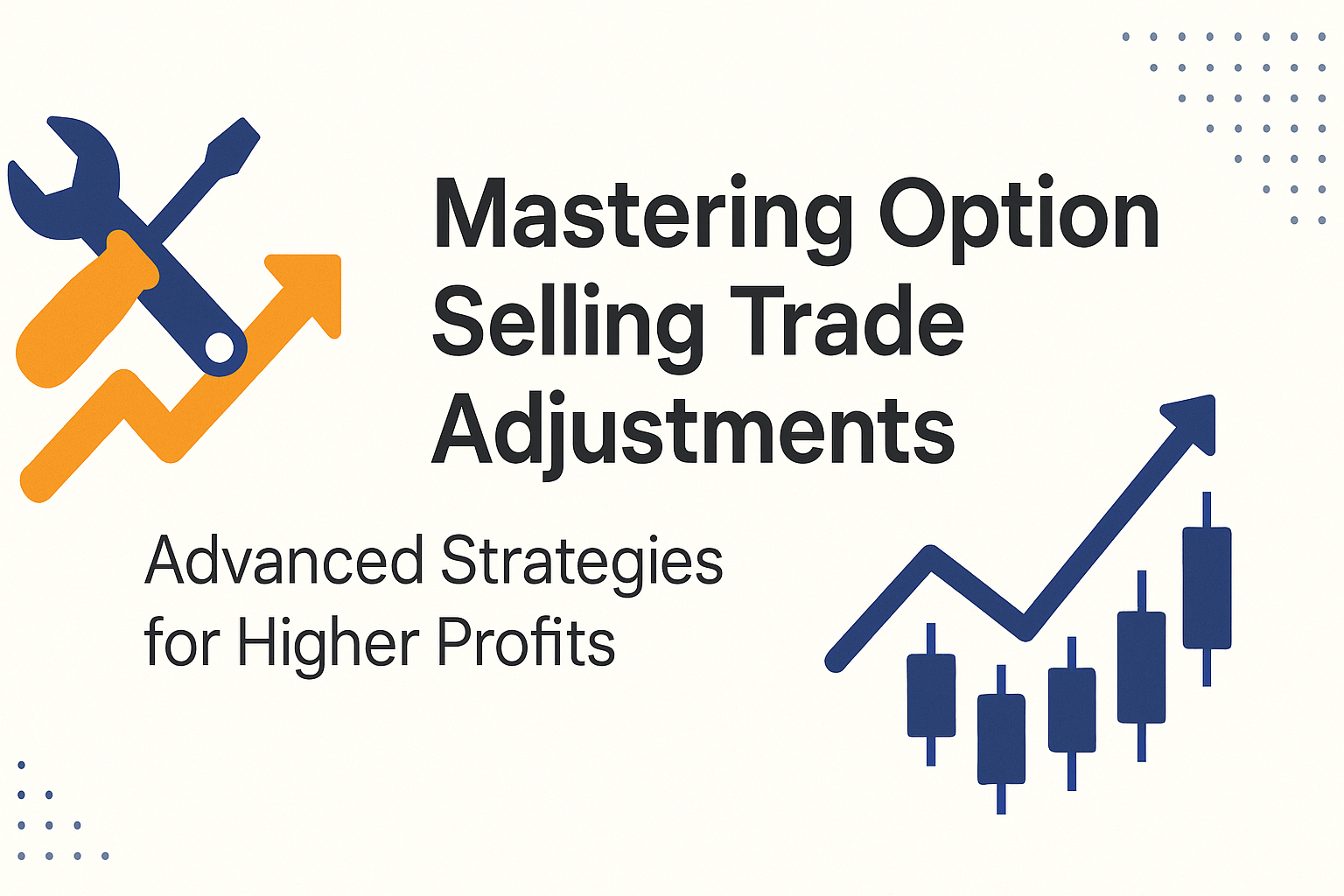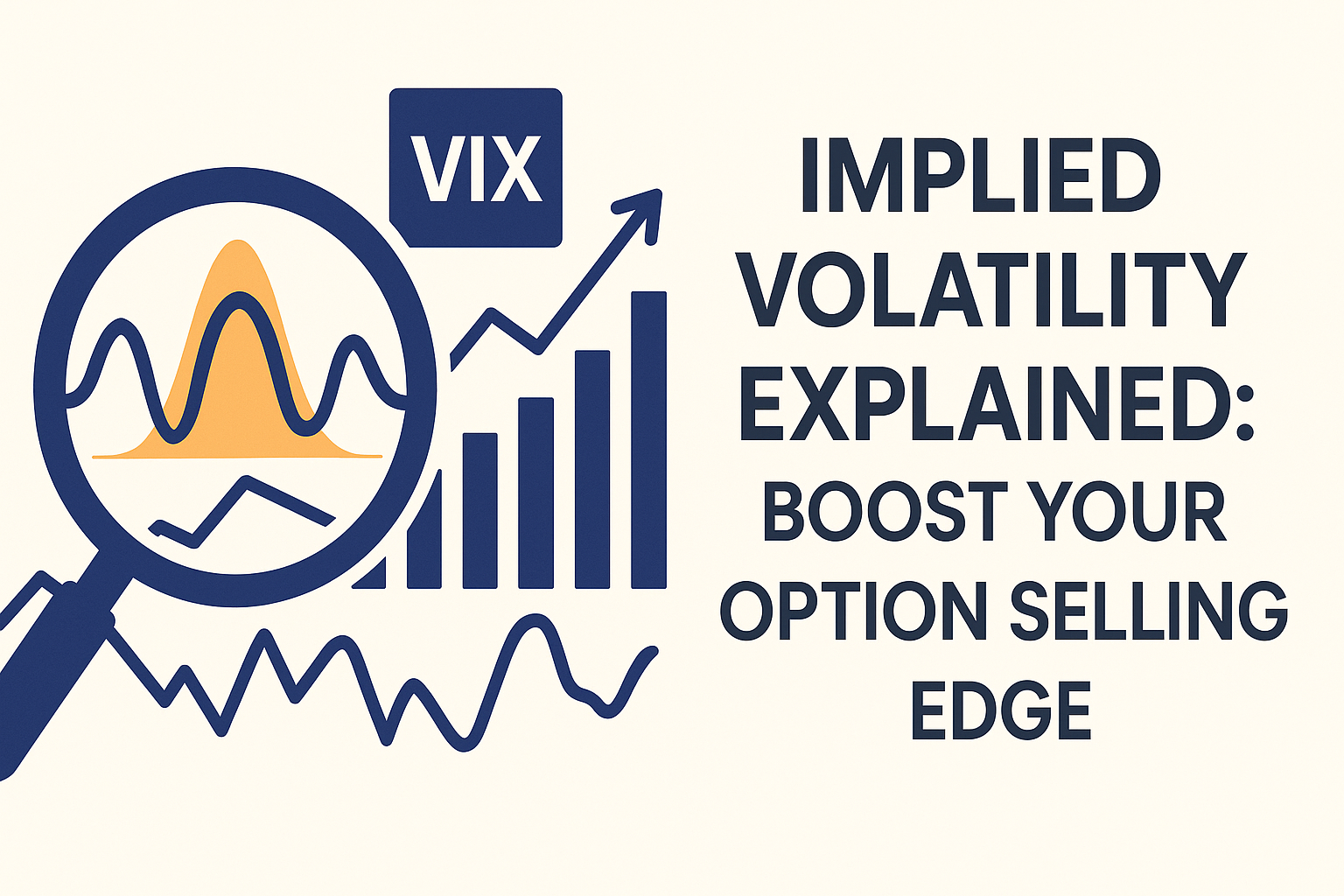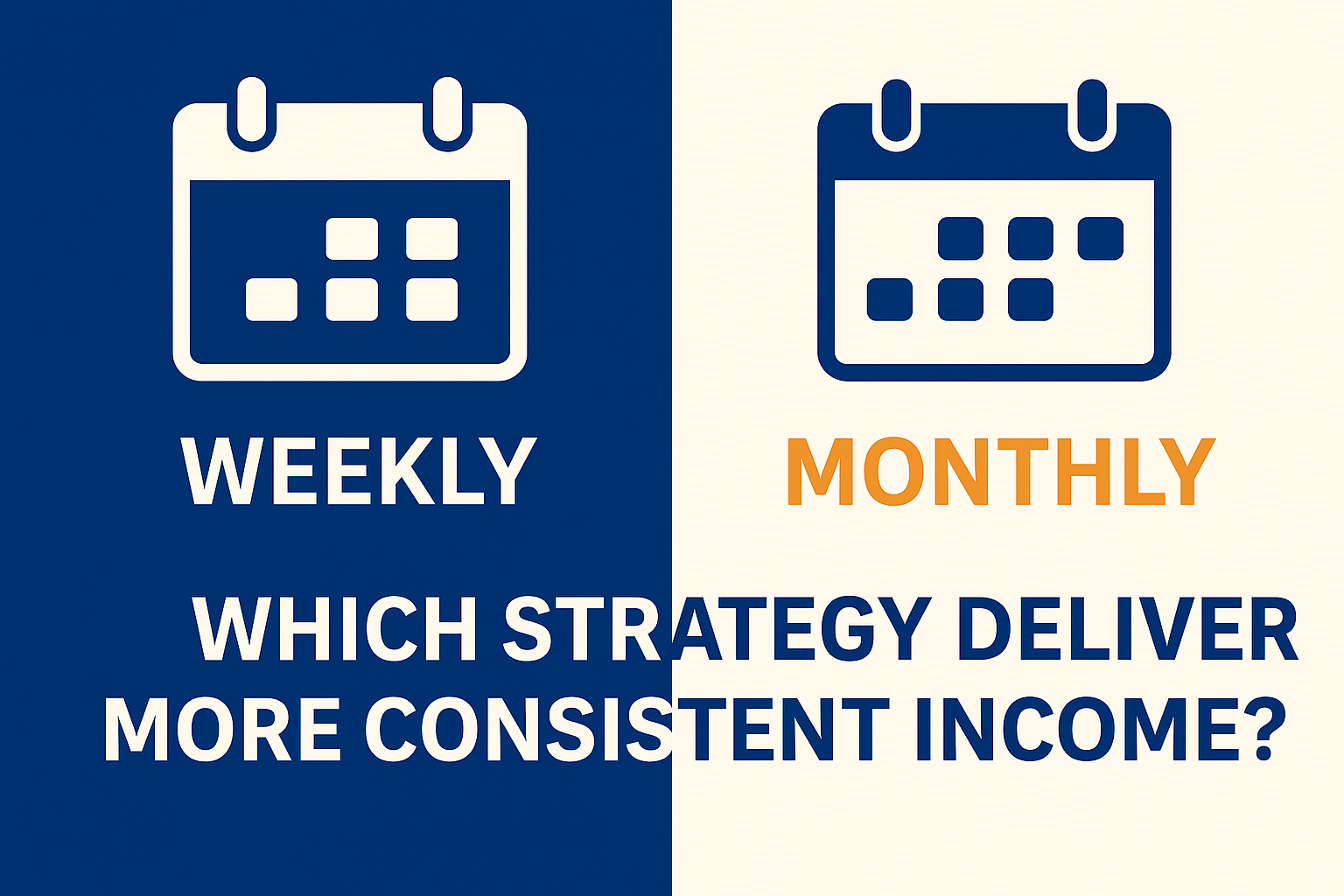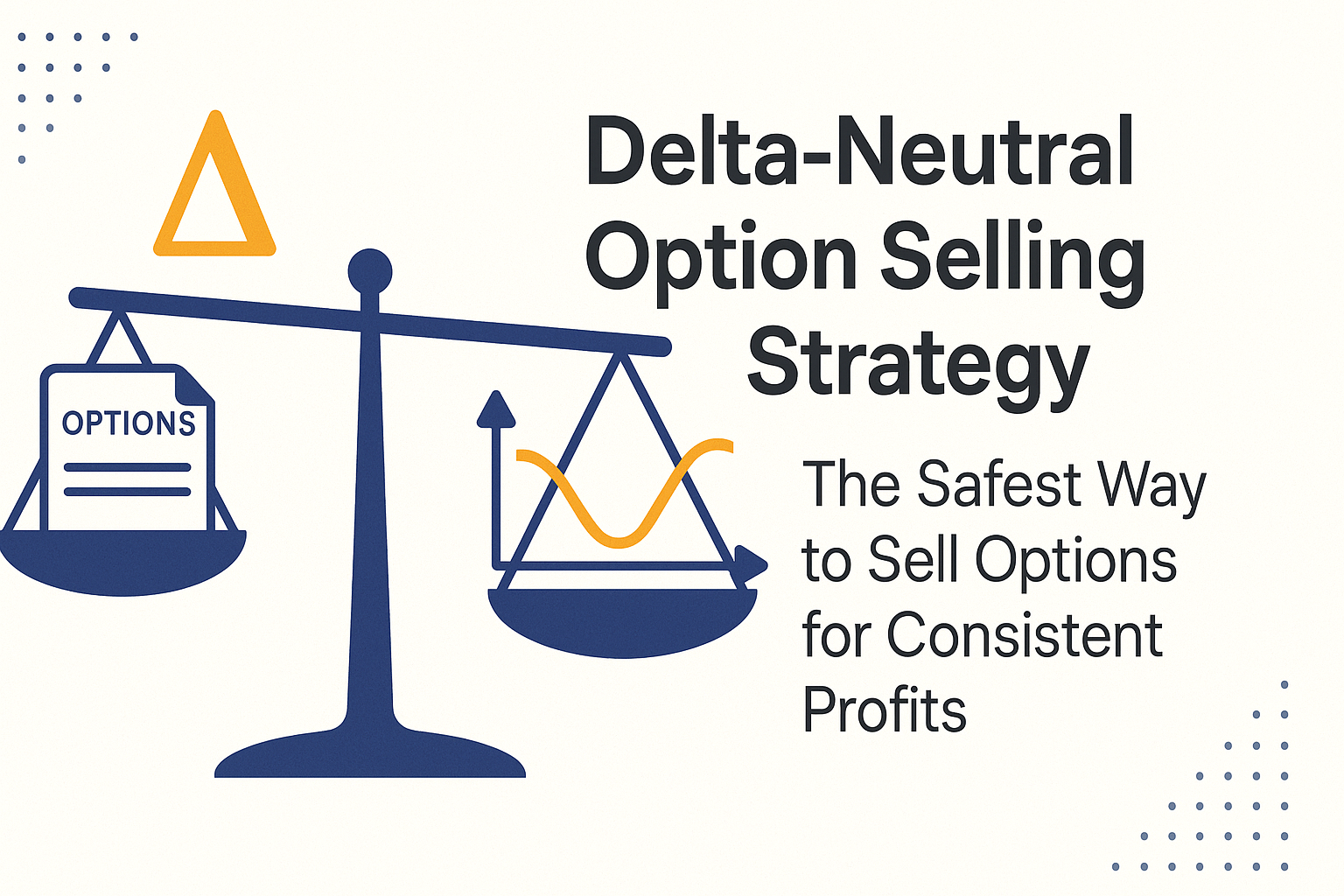Delta, Theta, Vega – Option Greeks Every Trader Must Know
“Trading without knowing the Greeks is like flying blind in a storm.”
— Every smart options trader, eventually.
📝 Introduction
If you’ve ever wondered why some traders thrive in options while others get wiped out, the answer often lies in how well they understand the Option Greeks. These core metrics — Delta, Theta, and Vega — are not just theory. They are the mathematical backbone of every successful options trade.
In simple terms, Option Greeks help you measure and control the three most important variables in options trading:
- How the price of the underlying affects your position (Delta),
- How time decay impacts your premium (Theta),
- And how changes in volatility move your profits (Vega).
Unfortunately, most beginners skip the Greeks and jump straight into strategies. The result? Unpredictable losses and a lack of control.
In this guide, we’ll break down the most essential Option Greeks in an easy-to-understand way — no PhD in math required. Whether you’re a directional trader or a non-directional option seller, mastering the Greeks is your key to consistency, control, and long-term success.
By the end of this post, you’ll know:
- What each of the major Option Greeks means,
- How they affect your P&L,
- And how to use them together for smarter, higher-probability trades.
📘 What Are Option Greeks?
In the world of options trading, Option Greeks are your best friend — and your most powerful toolkit. They are not complex academic terms meant to confuse you. Instead, they are practical indicators that help you manage and predict how your option positions will react to market changes.
So, what exactly are Option Greeks?
In simple terms, Option Greeks are numerical values that describe how different factors like stock price movement, time decay, and volatility affect the price of an option. They help traders quantify the risk and potential reward of every trade.
The major Option Greeks every trader should know are:
- Delta – Measures how much the option premium will change with a ₹1 move in the underlying stock.
- Theta – Tells you how much value your option loses every day due to time decay.
- Vega – Shows how sensitive your option is to changes in implied volatility.
Each of these Option Greeks gives you a different lens to evaluate your trade. For example:
- If you’re an option seller, Theta is your ally.
- If you’re betting on a big move, Delta is your guide.
- If you expect a volatility spike, Vega becomes your opportunity.
Without a proper understanding of Option Greeks, you’re flying blind — placing trades without knowing how they’ll behave when the market shifts. With them, you gain clarity, precision, and the ability to build consistent, controlled income strategies.
In the next sections, we’ll break down each Greek — Delta, Theta, and Vega — so you can start using them in your trades immediately.
📈 Delta
Measures change in option price
with underlying stock movement
⏳ Theta
Represents daily time decay
of an option’s value
🌪 Vega
Shows how option value changes
with market volatility (IV)
🧠 Why Should You Care?
Because even if your market view is right, the Greeks can make or break your trade:
- You might sell an option in a flat market but still lose money if Vega expands sharply
- Or you might buy a call option and the stock moves up — but the Delta is so low that your profit is negligible
- You might sell weekly options expecting Theta decay, but don’t account for Delta shift, and get stopped out
Understanding how Greeks interact is the first step toward building a strategy, not just placing trades.
If you want consistent profitability from strategies like Iron Condor, Short Straddle, or Delta-Neutral Selling, you must understand how each Greek moves with time and market changes.
📈 Delta – The Directional Greek Every Trader Must Master
Among all the Option Greeks, Delta is perhaps the most talked about — and for good reason. It tells you how much your option premium will change when the price of the underlying stock or index moves by ₹1.
🔍 What Does Delta Really Mean?
If you own a Call Option with a Delta of 0.60, it means:
- For every ₹1 increase in the stock price, the premium will increase by ₹0.60 (assuming other factors remain constant).
- Similarly, for a Put Option with a Delta of -0.40, the premium will increase ₹0.40 when the stock falls ₹1.
Delta ranges:
- Call Options: Delta is between 0 and +1
- Put Options: Delta is between 0 and -1
✅ High Delta = Higher sensitivity to market moves
✅ Low Delta = Less impact from market direction
🎯 Why Delta Matters to Option Sellers and Buyers
For option buyers, Delta is often used to choose the right strike:
- A deep in-the-money option (high Delta) behaves more like stock.
- An out-of-the-money option (low Delta) is cheaper but may expire worthless.
For option sellers, Delta is a powerful probability estimator.
For example, a 0.15 Delta on a short option implies there’s roughly an 85% chance the option will expire worthless — meaning, you keep the full premium.
This is why Delta is key when building high-probability income strategies like:
- Iron Condors
- Credit Spreads
- Strangles
📊 Real-World Use Case
Let’s say Nifty is at 22,000. You sell a 22,800 Call option with Delta 0.12 and receive ₹40 in premium.
What Delta tells you:
- There’s an 88% chance the Call will expire worthless.
- For every ₹100 Nifty moves up, the premium may rise ₹12.
- You can track risk and adjust the position if Delta rises too fast.
| Strike Price | Option Type | Delta Value | Probability ITM | Trading Insight |
|---|---|---|---|---|
| 21,700 | Call | 0.80 | 80% | High probability ITM – avoid selling |
| 21,900 | Call | 0.50 | 50% | At-the-money – rapid Delta movement |
| 22,100 | Call | 0.25 | 25% | Popular for income strategies |
| 22,300 | Call | 0.10 | 10% | Far OTM – low risk for option sellers |
⚖️ Key Takeaways on Delta
- Delta is not just about price movement — it also represents probability, hedge ratio, and exposure.
- As expiration nears, Delta becomes more extreme (closer to 0 or 1).
- Delta is the most essential of all Option Greeks for directional bias and risk control.
🕒 Theta – The Time Decay Greek That Works in Your Favor
If you’re an option seller, Theta is your best friend. Among all the Option Greeks, Theta plays a crucial role in determining how fast an option’s price erodes over time — even if the market doesn’t move.
⏳ What Is Theta?
In simple terms, Theta measures time decay. It tells you how much value an option will lose each day, assuming all other factors (like price and volatility) remain constant.
- If an option has a Theta of -5, it means the option will lose ₹5 in premium every day.
- The value is negative because it represents a loss in value for the option buyer.
- For option sellers, that decay is profit — and it’s predictable.
🧠 The closer you get to expiry, the faster Theta works.
Theta erosion accelerates in the final 7–10 days before expiry.
📉 How Theta Affects Option Pricing
Let’s assume you’re tracking an At-the-Money (ATM) option with 15 days to expiry:
- Premium: ₹100
- Theta: -3.5
If the market stays flat for one day, the premium will drop to ₹96.5 the next day.
That’s ₹3.5 in your favor if you’re short the option.
🧮 Theta vs. Expiry Timeline (Visual Table)
You can use this visual ladder to understand how Theta accelerates closer to expiry:
| Days to Expiry | Theta (Daily Decay) | Who Benefits? |
|---|---|---|
| 30+ | Low (₹0.5–₹1) | Minimal benefit |
| 15–20 | Moderate (₹2–₹3) | Better for sellers |
| 7–10 | High (₹4–₹6) | High edge for sellers |
| 1–3 | Very High (₹8–₹15) | Max time decay benefit |
🛠️ How Traders Use Theta in Strategies
- Option buyers suffer from Theta — especially when holding OTM options near expiry.
- Option sellers (like in Iron Condors, Credit Spreads, and Short Straddles) profit from Theta erosion every day the price stays in range.
✅ That’s why most professional traders build Theta-positive portfolios — earning from time even when the market is flat.
💡 Key Takeaways on Theta
- Theta is your passive income engine if you’re an option seller.
- Time decay is non-linear — it gets faster as expiry approaches.
- The best way to use Theta is in high probability, range-bound setups.
- Combined with Delta, Theta helps build a balanced and profitable strategy.
📌 Related post: Essential Risk Management Rules Every Successful Option Seller Must Follow
🌪️ Vega – The Volatility Greek That Can Make or Break Your Trade
Among all the Option Greeks, Vega is often the most misunderstood — yet it’s one of the most powerful forces behind option pricing. While Delta and Theta affect your trades through direction and time, Vega affects your trades through market fear and volatility.
📊 What is Vega?
Vega measures how much an option’s premium will change for every 1% change in Implied Volatility (IV).
- If an option has a Vega of ₹0.50, and IV rises by 1%, the premium increases by ₹0.50.
- Similarly, if IV drops by 1%, the premium falls by ₹0.50.
Unlike Delta and Theta, Vega affects both Calls and Puts in the same direction.
🧠 High Vega = High sensitivity to volatility changes
📉 Low Vega = Stable premium, less affected by fear or events
🌐 Real-World Scenario: The Power of Vega
Let’s say you’re looking at a stock trading at ₹1000.
You’re considering buying a Call Option:
- Premium: ₹30
- Implied Volatility: 20%
- Vega: ₹0.80
If IV jumps to 25% (a 5% rise), the premium would rise by ₹4.00 (₹0.80 × 5), taking your option to ₹34 — even if the stock hasn’t moved yet.
This is how event-based trading works — like around earnings, RBI announcements, or major geopolitical news.
💣 Why Vega Matters for Traders
📈 For Option Buyers:
- You want to buy when IV is low and sell when IV rises.
- Events like earnings or budget announcements often cause IV spikes.
- Buying before the event and exiting after IV rise can be profitable.
📉 For Option Sellers:
- You want to sell when IV is high and buy it back when IV drops.
- High IV means inflated premiums, which is perfect for income-based strategies.
- After the event, when IV collapses, you profit even if the stock doesn’t move.
🔥 Vega vs. Time to Expiry – How It Changes
Vega is higher for longer-dated options and lower for near-expiry options.
| Time to Expiry | Vega Impact | Best Use |
|---|---|---|
| 30+ Days | High | Great for buying premium ahead of events |
| 7–15 Days | Moderate | Good for premium selling with adjustments |
| 1–5 Days | Low | Ideal for intraday or expiry-day selling |
📌 Related: Delta-Neutral Option Selling: A Safe Way to Sell Options
💡 Key Takeaways on Vega
For short options: Sell high IV → Profit when IV drops
Vega shows how option prices respond to market fear, uncertainty, or excitement.
Always check IV before entering — a high IV means high risk and reward.
For long options: Buy low IV → Sell high IV
⚖️ How the Greeks Work Together – A Complete Picture
Now that we’ve covered Delta, Theta, and Vega individually, it’s time to bring them together. In real-life trading, you don’t deal with just one Greek — you deal with all of them acting simultaneously on your options position.
This combination is what makes options trading a calculated game, not pure gambling.
🧩 The Combined Greek Effect
Let’s break down a sample trade and see how Delta, Theta, and Vega interact.
📌 Trade Setup: Short Bank Nifty 48,500 Call (Weekly expiry)
- Delta = 0.15
- Theta = +10
- Vega = -6
- Premium Collected = ₹120
📈 Scenario A: Market stays flat
- Delta impact: Minor, no big price move
- Theta impact: Gains ₹10/day from time decay
- Vega impact: If IV drops by 2%, gain ₹12 more
✅ Result: Premium erodes fast → Profit
📉 Scenario B: Market rises 300 points
- Delta impact: Option price increases by ~₹45 (0.15 × 300)
- Theta impact: Still gains ₹10/day
- Vega impact: If IV increases, lose ₹12
❌ Result: Partial loss or potential adjustment needed
🌪️ Scenario C: Sudden spike in volatility
- No price move, no time impact
- Vega impact: IV rises 5% → Loss of ₹30 (5 × 6)
⚠️ Even without price movement, position can turn red.
This clearly shows how a “low-risk looking” trade can go wrong if you ignore one of the Greeks.
📌 Practical Tip
Every time you enter a trade, ask:
“What happens if price moves? What happens if time passes? What happens if volatility spikes?”
This mental checklist can save you from blind trades and improve your win rate drastically.
🔄 Ideal Use Case for Each Greek
| Greek | Option Buyers Like | Option Sellers Like |
|---|---|---|
| Delta | Yes (high Delta) | Yes (low Delta) |
| Theta | ❌ (hurts them) | ✅ (time decay profit) |
| Vega | ✅ (increasing IV helps) | ❌ (prefer low/stable IV) |
This chart can help you decide which Greek to prioritize based on your trading style.
📌 Related: NSE Investor Education Resources
🧠 Final Thoughts: Mastering Greeks for Smarter Option Trading
When it comes to making smarter trading decisions, nothing beats the power of Option Greeks. These aren’t just academic formulas — they are the foundation of real-time risk analysis and premium optimization.
Many traders focus only on the strategy — like Iron Condors, Credit Spreads, or Straddles — but forget that Option Greeks determine whether these strategies will actually work in changing market conditions.
A solid grasp of Delta, Theta, and Vega allows you to:
- Forecast how your position will behave if the market moves up, down, or stays flat.
- Understand how much time decay is working in your favor (or against you).
- Anticipate how changes in implied volatility will boost or hurt your trades.
In short, Option Greeks give you control — and control is what separates professionals from gamblers.
Before you place your next trade, ask yourself:
- ✅ Am I overexposed to Delta risk?
- ✅ How much Theta is helping me daily?
- ✅ What impact will Vega have if volatility spikes?
If you can answer those confidently, you’re not trading blindly — you’re trading with a system built on data and logic.
🔁 What’s Next?
Now that you’ve understood the value of Option Greeks, here are more advanced posts to take your learning further:
- 🔗 Essential Risk Management Rules Every Successful Option Seller Must Follow
- 🔗 Iron Condor Strategy: Build a High-Probability Income Setup That Wins Consistently
- 🔗 Delta-Neutral Option Selling Strategy: The Safest Way to Sell Options for Consistent Profits
📣 Ready to Master Option Strategies With Greek Precision?
Bookmark our free tools to gain an edge:
Want deeper guidance? We’re building more calculators and dashboards based on real insider activity, trending stocks, and volatility signals — stay tuned by subscribing!






